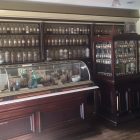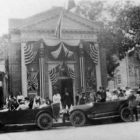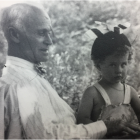Around Town
New Canaan Now & Then: ‘White Oak Shade District’ Antique
|
Carey Weed, born in Stamford in 1782, settled on a farm in what was then called the White Oak Shade District.
He was a soldier in the War of 1812. With his second wife, Hannah Reed, he had a son, Andrew J. Weed, who was born August 19, 1819.
Like his father, Andrew was both a farmer and a shoemaker. Andrew married Betsey Banks, from Easton, and they lived and ran his father’s farm on White Oak Shade. Andrew and Betsey had five children – Clarissa, Mary, Henry, John, and Freddie, whom they raised in their house at #33 (listed today as #51). According to tax records, the four-bedroom house has been owned by just four families since the bicentennial of 1976, when it was sold for $137,000. The town in 2003 issued permits to demolish a garage and reassemble a barn on the 1.07-acre property. “New Canaan Now & Then” is presented in partnership with the New Canaan Museum & Historical Society.





